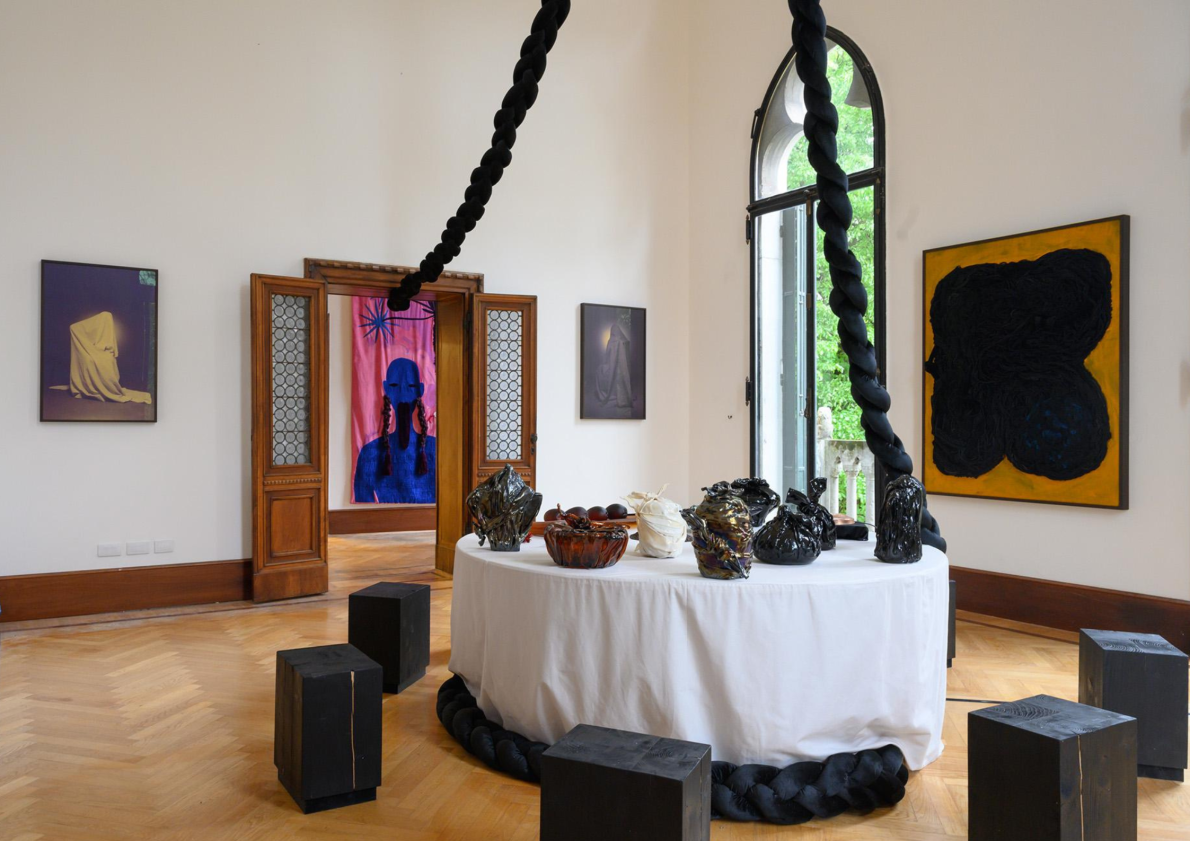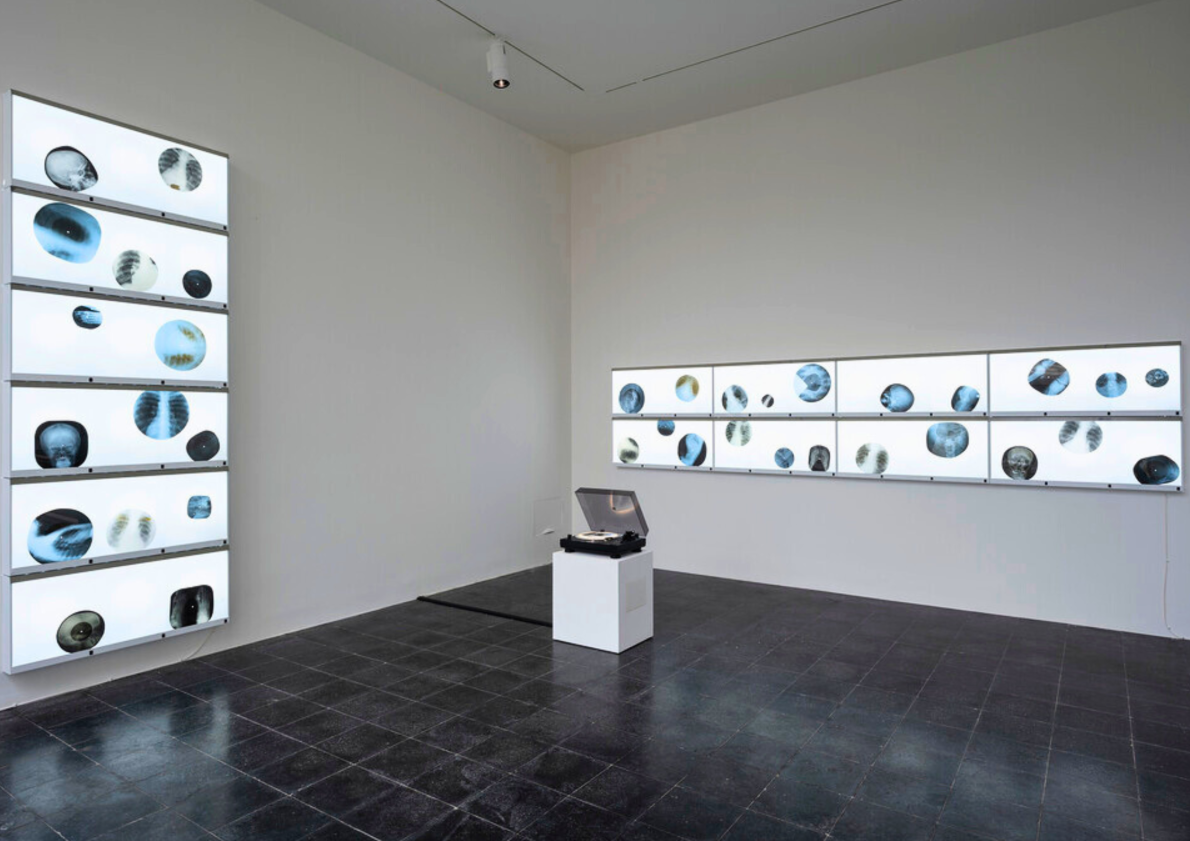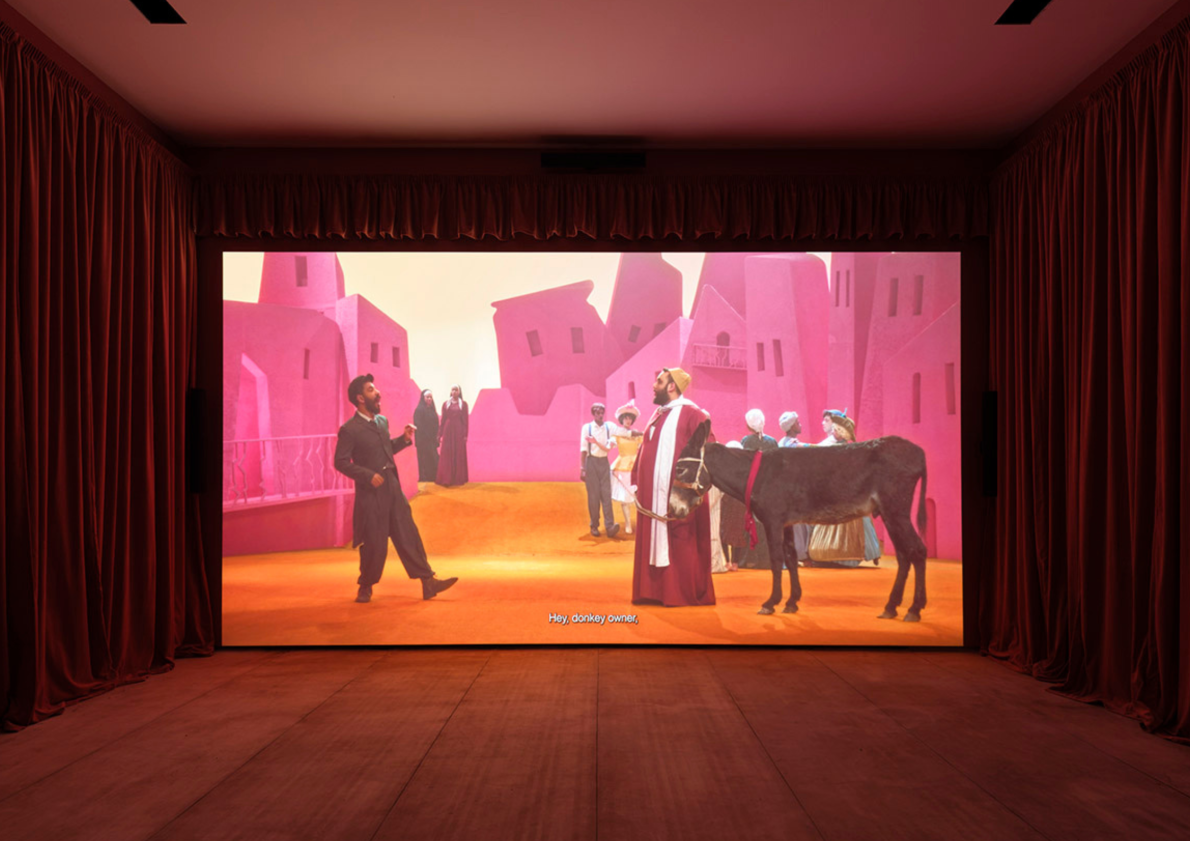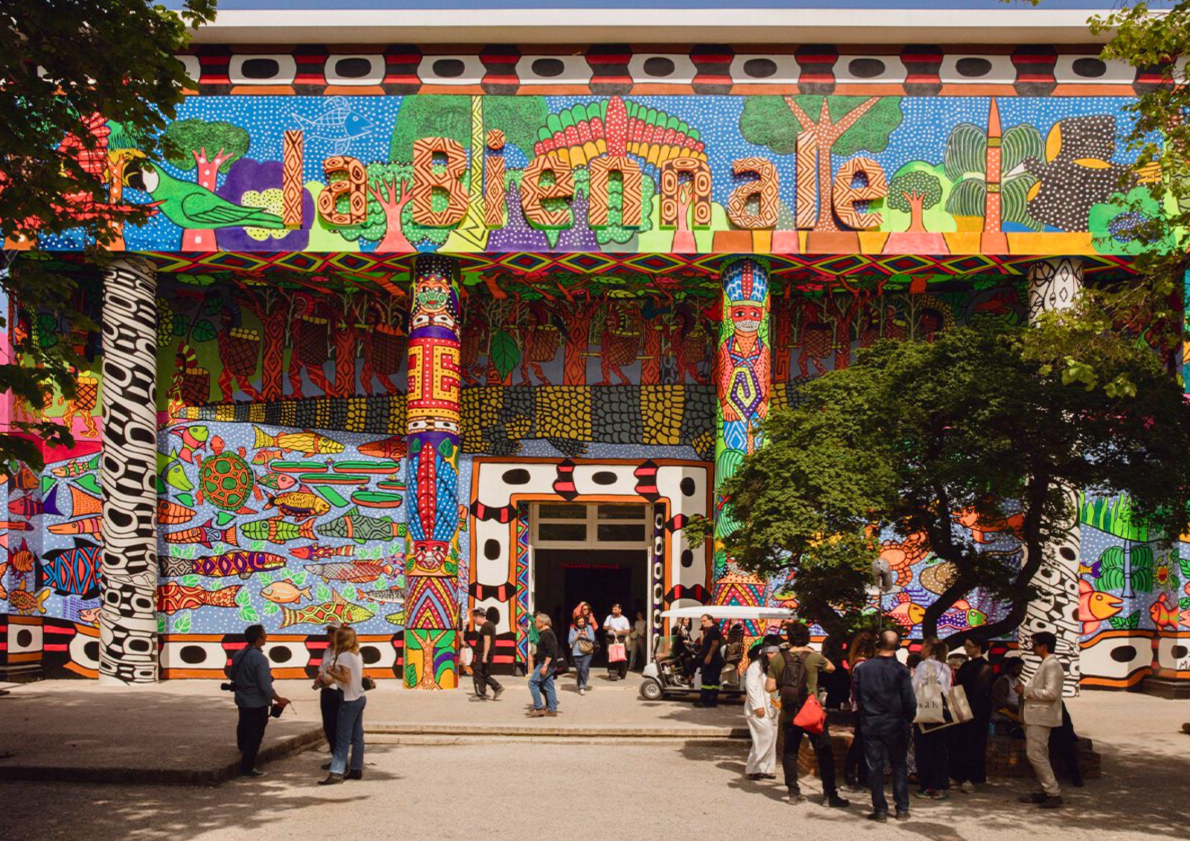


Prefer to listen to this post instead?
The Venice Biennale returned this year under the evocative theme Stranieri Ovunque – Foreigners Everywhere. Although it opened in April, there is still plenty of time to visit as it is on until the end of November.
This year’s Biennale is curated by Adriano Pedrosa, who is the exhibition’s first ever South American curator. His focus throughout has been to privilege artists who have never previously participated in the prestigious cultural event. The result is the presentation of marginalised, excluded and oppressed beauty, work that has been traditionally erased by dominant cultural narratives. 331 artists and collectives living in and between 80 countries, explore themes related to that which is different, while investigating the path towards integration,
At Artichoke, we were thrilled to find that some of our Lumiere and The Gallery artists are represented this year, both in the main Biennale as well as in some of the concurrent events taking place during the Venice Biennale.

The title of this year’s Venice Biennale is drawn from a series of works created by the Paris-born, Palermo-based Claire Fontaine collective. As you move around the exhibition you encounter collections of neon words, each spelling out the word “foreigner” in a different language. As of now, there are roughly 53 languages in the series, both western and non-western – some of which are extinct!
The backdrop for the work is a world rife with crises concerning the movement and existence of people across borders, reflecting the perils and pitfalls of language conditioned by identity, nationality, race, gender, sexuality, freedom, and wealth.
“The expression Stranieri Ovunque has several meanings. First of all, that wherever you go and wherever you are you will always encounter foreigners – they/we are everywhere. Secondly, that no matter where you find yourself, you are always truly, and deep down inside, a foreigner” – Adriano Pedrosa, Exhibition Curator.
You might recognise Claire Fontaine’s work from Lumiere 2011 in Durham, where they exhibited a neon artwork titled Capitalism Kills (Love).
Claire Fontaine’s series can be found within the Central Pavilion, as well as at Corderie dell’Arsenale and Gaggiandre.

Crip Arte Spazio: The DAM in Venice, curated by David Hevey and produced by Shape Arts, is an exuberant celebration of the Disability Arts Movement.
Located in Guidecca, the show features a selection of works by Artichoke Trustee, Tony Heaton OBE, including A Bigger Ripple, which was exhibited at Lumiere in 2021, the exhibition challenges the association of disability with greyscale and presents instead a bright, vibrant and joyous space.
From archival material to sculptural installations, video art and a comic book to accompany the show, Crip Arte Spazio is a show not to be missed.
Discover more about the exhibition and plan your visit here.

Themes of unity, movement and migration in modern society are an ongoing concern of artist Osman Yousefzada. His work, More Immigrants Please, exhibited as part of The Gallery, Season 3, sought to shift the conversation on migration and convey a bold message of hospitality.
Now, in a collaboration with the V&A Museum & Fondazione Berengo, Yousefzada has created a unique exhibition, WELCOME! A PALAZZO FOR IMMIGRANTS, curated by Nadja Romain and Amin Jaffer, the intervention at the Palazzo Franchetti.
This exhibition is open until 7 October 2024. Discover more about WELCOME! A PALAZZO FOR IMMIGRANTS and plan your visit here.

Fondazione Berengo’s biannual exhibition GLASSTRESS returns to the enchanting island of Murano for its 8th edition.
The artists in this year’s edition range from well-known names to rising stars, with over 35 artists participating in the group show, including Ai Weiwei and Chila Burman, both of whom were part of last year’s Lumiere 2023 in Durham.
Discover more about the exhibition and plan your visit here.
In addition to the contributions by Artichoke artists, we’ve also selected some of our favourite artworks and exhibitions, that you won’t want to miss.

Having won the prestigious Golden Lion for Best National Participation for the first time, Archie Moore’s kith and kin in the Australian Pavilion is one not to be missed.
This astonishing work is both evidence and a reminder that First Nations peoples of Australia are some of the oldest continuous living cultures on Earth, and statistically one of the most incarcerated. In sprawling chalk on a blackboard mural, Moore traces his Kamilaroi and Bigambul relations back 65,000+ years , including the common ancestors of all humans, with a handwritten family tree engulfing the audience in the dark space. Seeing it is an incredibly moving experience, and we were thrilled to hear last week that it has just been acquired by Tate in partnership with Queensland Art Gallery | Gallery of Modern Art.

The Austrian Pavilion is both beautiful and incredibly haunting. For its contribution to the 2024 Venice Biennale, Vienna-based artist Anna Jermolaewa spans the arc of her personal experience as a political refugee to signifiers of revolution and subversion against non-democratic regimes.
The image above shows Ribs, a work that recounts how, during the Soviet Union’s ban on popular music, albums were ingeniously copied onto discarded X-ray films and covertly sold on the black market. Inside the pavilion, Jermolaewa restores the ‘records’ to their original medium by displaying them on a doctor’s X-ray film viewer.
Find out more about the Austrian Pavilion and its live performances here.

Wael Shawky’s Egyptian Pavilion is also a must-see. The filmed adaptation of the original musical play, Drama 1882, directed, choreographed, and composed by the artist, narrates the story of the Urabi Revolution against imperial influence from 1879 to 1882.
Theatrical and dreamlike, the characters in Drama 1882 sway to the hypnotic melodies, sung in classical Arabic, capturing the revolt’s catastrophic anti-colonial nationalism. Make sure to plan enough time to watch the whole piece unfold.

The Huni Kuin Artists Movement (MAHKU), an indigenous art collective from the Kaxinawá (Huni Kuin) Indigenous Territory in Acre, Brazil, have transformed the Central Pavilion’s traditionally blank façade into a fantastic, multi-coloured monumental mural, that depicts the story of kapewë pukeni (the alligator bridge).
The myth describes the passage between the Asian and American continents through the Bering Strait, and the alligator who offered to carry them across in exchange for food. In this way it presents MAHKU and its members as the producers and products of passages between distant contexts and territories, bridging traditional village practices with the standards and expectations of the global art world.

Personal Accounts is an ongoing transnational project initiated in 2014, employing video and sound to create installations that address global norms of patriarchal violence.
The project records the testimonies of black, brown, indigenous, femme, queer, non-binary and trans individuals, with each account unveiling everyday structures that preserve patriarchal, racialising and colonial orders, revealing trauma and violence.
However, rather than hear these personal testimonies, the viewer is faced with a series of films in which the sounds of words are withheld. We are instead immersed in a room where the focus is on the paralinguistic elements: breath, swallows, gesticulation, silence… and the result is immensely impactful.

Here, Pedrosa challenges notions of traditional Western portraiture. Where so often in galleries across Europe and the US, a room full of portraits will be of white sitters, this exhibition filled the space with the faces of People of Colour. Featuring works by esteemed Latin American artists Tarsila do Amaral and Frida Kahlo, alongside the likes of Indian expressionist painter F.N. Souza and Lebanese Modernist Saloua Raouda Choucair, the Portraits rooms are a must when visiting the Central Pavilion.

Experience the resilience and determination of those navigating their way to a better future with Bouchra Khalili’s The Mapping Journey Project – a powerful testament to the strength of the human spirit in the face of immense challenges.
Bouchra Khalili is a French-Moroccan artist and scholar, whose multidisciplinary practice develops collaborative strategies of storytelling with members of communities excluded from citizen membership.
The Mapping Journey Project was developed over three years across the Mediterranean migration routes, collaborating with refugees and stateless citizens from North and Eastern Africa, the Middle East, and South Asia. The eight films depict a hand tracing the often tortuous and perilous, years-long journeys of individuals on a map, as they recount their stories of migration.
20 April – 24 November 2024
Summer opening hours: 11:00 – 19:00
Autumn opening hours: 10:00 – 18:00
Closed on Mondays (except 2 and 30 September, 18 November)
To find out more and book your tickets to the Venice Biennale, visit labiennale.org.
Don’t miss your chance to experience the powerful and thought-provoking works at the 2024 Venice Biennale. With its compelling theme and diverse array of artists, this year’s exhibition offers a unique opportunity to engage with works that challenge and inspire. Discover our guide and make your plans to visit before time runs out.